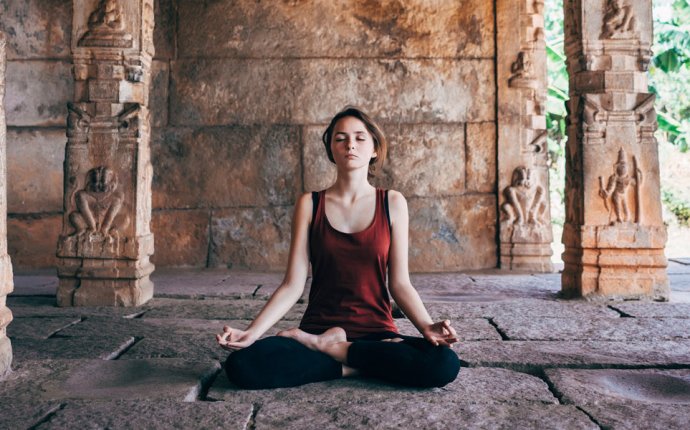
Yoga Posture for high blood pressure
 Yoga can be a very beneficial therapy for controlling and lowering high blood pressure naturally. The gentle, soothing practice of yoga asanas settles both mind and body and reduces stress—a leading cause of hypertension.
Yoga can be a very beneficial therapy for controlling and lowering high blood pressure naturally. The gentle, soothing practice of yoga asanas settles both mind and body and reduces stress—a leading cause of hypertension.
If you choose the right yoga poses, yoga can help to switch on the parasympathetic nervous system, which is responsible for rest and repair, and turn off the sympathetic nervous system, used for the fight-or-flight stress response.
Increased parasympathetic activity has a beneficial effect on many systems in the body, and allows the nervous system to become more balanced. This is one way in which practicing yoga for high bp can help free up the body’s inherent healing response to reduce blood pressure naturally.
 Used corrrectly, yoga can be a great therapy for high blood pressure. However, there are some cautions that need to be considered, and you are best off working with a yoga therapist that can personally tailor your practice of yoga, if you have high blood pressure.
Used corrrectly, yoga can be a great therapy for high blood pressure. However, there are some cautions that need to be considered, and you are best off working with a yoga therapist that can personally tailor your practice of yoga, if you have high blood pressure.
If you are on hypertensive medication, you will want to continue your medication and only phase it out under a doctor’s supervision. Even though your high blood pressure is lowered by medication, it is not stable at that lower reading. So even if your blood pressure has been lowered to normal levels by medication, it is still important to go by the following precautions when practicing yoga with high blood pressure.
 General Cautions for High Blood Pressure
General Cautions for High Blood Pressure
A stress test may be crucial before you start. If you have, any of the following conditions, it is essential seeing your physician. Any medications you may be taking should also be discussed with your physician.
Always get your physicians advice if:
- You have cardiovascular disease
 You have risk factors for cardiovascular disease such as diabetes, high cholesterol, atherosclerosis, or high inflammatory markers, such as high levels of homocysteine or C-reactive protein.
You have risk factors for cardiovascular disease such as diabetes, high cholesterol, atherosclerosis, or high inflammatory markers, such as high levels of homocysteine or C-reactive protein.
Contraindications When Practicing Yoga with High Blood Pressure
In general, yoga asanas that put the body in an inverted position, i.e. having the legs higher than the heart and the heart higher than the head, should be avoided by people with cardiovascular disease.
If you have high blood pressure, the following yoga inversions should be avoided:
- Shoulderstand (Sarvangasana) or Headstand Pose (Sirsasana). These two yoga poses increase blood pressure in the head the most, because the legs and trunk are maximally elevated and the head is as far below the heart as possible.
- Even gentle, relaxing inversions like Legs Up the Wall Pose (Viparita Karani) are poses to avoid with high blood pressure.









